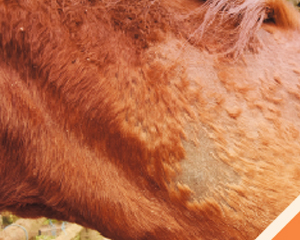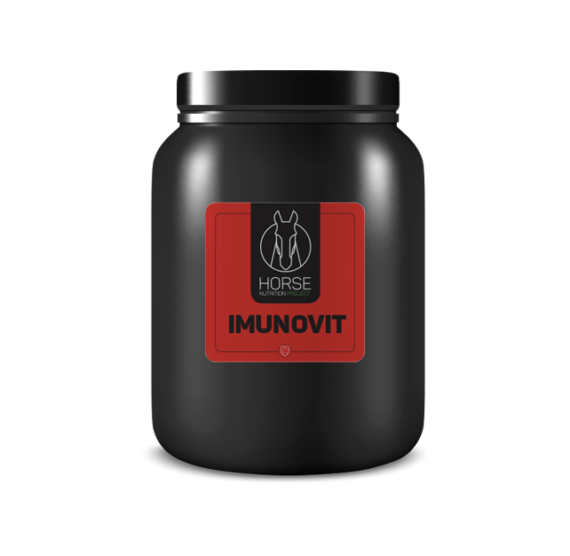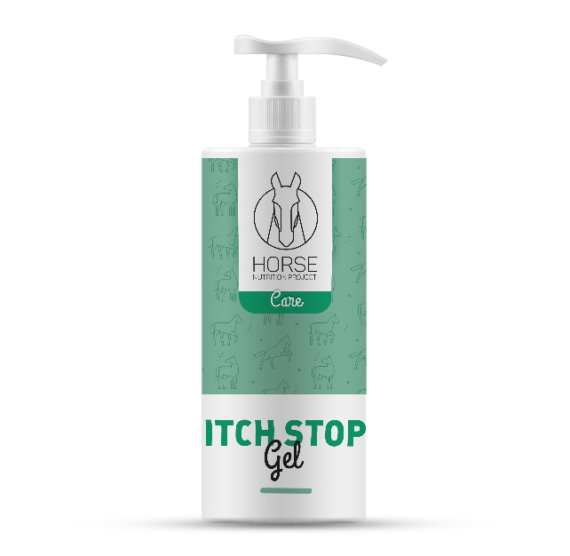Management of the horse with summer eczema
Summer dermatitis does quite live up to its name as it is an allergic skin disease that is seasonal and recurring in nature. This disease is being widely recognized in the equestrian world and makes many owners tremble just at its mention. Summer eczema is the most common allergic reaction encountered in equine dermatology. Summer eczema affects about 10% of horses of all breeds.

Symptoms of summer eczema
Symptoms of summer eczema are typical and appear on the first fine days of spring (daytime temperature above 10 ° C) with a peak in their expression during the summer (between May and October).
The symptoms are initially mainly itching (pruritus) localized in the tail and mane. The scratching associated with this itching leads to hair loss and more or less pronounced skin erosions. Some more sensitive horses may even have large lesions spread all over the body.
The scratching lesions can then be colonized by parasites and / or bacteria. Secondary infections of the lesions can make treatment long and tedious.
Causes of summer eczema
The root cause of summer eczema is bites from insects of the genus Culicoides. So summer eczema is also called insect bite hypersensitivity (IBH). These midges feed by biting. During this sting, they inject a cocktail of proteins from their salivary glands. These proteins are the allergens responsible for initiating the sensitization process and allergic reaction in susceptible horses.
Technically, the allergic reaction is identified as IgE-mediated type I. IgE antibodies are responsible for activating mast cells which will release a whole series of substances (vasoactive amines, lipid mediators, cytokines, etc.) which are responsible for the immediate hypersensitivity reaction. This reaction is followed by infiltration of the skin by lymphocytes and eosinophils. All these cells belong to the horse’s normal immune system, but following their overstimulation by IgE, they destroy skin cells.
Some horses are predisposed to IBH. There is some evidence that the predisposition to develop summer eczema is inherited. Certain breeds like the Welsh pony, Icelandic horse and Shires for example are predisposed to develop symptoms of summer eczema more frequently and at a younger age.

Treatments for summer eczema
Immunotherapy based on specific allergens (ASIT)
In human medicine, the ASIT method is the only really effective treatment method for type I hypersensitivities. It is the method used for pollen allergies, for example. Its principle is to use the purified allergens to direct the immune system towards the production of IgG and no longer of IgE. IgG4 block the sensitization process. Weak point of the method, it is necessary to determine as exactly as possible to which allergen the body is sensitized. It is therefore necessary to use extremely purified antigens.
In horses, the ASIT method for summer eczema is still in experimental mode. We are currently able to produce Culicoides allergens. The next step is to set up clinical studies to assess the effectiveness of the method in horses, to determine the best route of administration, …
A vaccine against interleukin IL-5 and IL-3
It has been noted that immune cells called eosinophils are responsible for a significant portion of the damage observed. There is a correlation between the level of eosinophils in the blood and the severity of symptoms. Eosinophils are activated by molecules like interleukin IL-5 and Il-31. It is possible to inactivate this molecule by vaccinating horses to render IL5 and Il 31 incapable of stimulating eosinophils. Still at the experimental stage, this method seems effective but is prohibitively expensive.
What to do while waiting for the development of these promising methods?
- Limit Culicoïdes bites as much as possible by wearing full blankets in meadows and in the box
- Other biting insects can be responsible for the appearance of summer mange such as some mosquitoes, stable flies … They all have in common that they reproduce in water. It is therefore necessary to hunt down all the small puddles, containers that may contain stagnant water and regularly replace the water in meadow containers to limit the reproduction of these unwanted insects around the stable.
- Rigorous hygiene is necessary in the stable. The biting insects find refuge in the manure. Keep the stalls as clean as possible and house the affected horses as far as possible from the places where the manure is stored.
- Use repellents when you have to do work without blankets
- Treat the lesions with creams or gels which promote skin repair, which has an antiseptic power to prevent secondary infections and which show emollient and soothing properties. Herbal medicine seems to have an important role to play here. See our product Itch Stop.
- The use of glucocorticoids (prednisolone for example) also helps with the failure to cause waiting times before competitions.
- The use of oral beta-glucans may help guide the immune response. Beta glucans are known to improve immune responses to the vaccine. Their use in the management of summer scabies requires further study but seems worth considering. See our product Imunovit.
We recommend you this product:

IMUNOVIT
An extremely complete formula to boost the immune defenses of your horses.
Imunovit helps your horse to cope with all the situations in which its immune system is called upon: passage of flu, regrouping of young horses for wintering, episodes of respiratory problems.
Imunovit helps manage healing problems and promotes healing in sweet itch.
ITCH STOP gel
Itch Stop gel is an exclusive treatment intended to quickly relieve the itching associated with insect bites.
Summer mange or recurrent summer dermatitis is a very disturbing pathology for the horse that has it. Following insect bites, the induced hypersensitivity reaction causes intense itching which causes the horse to scratch harder and harder.
This itching has a very important impact on the well-being of the horse and can be the cause of extensive and painful scratching lesions. Itch Stop gel is a unique combination of cade oil and 5 high quality plant extracts.


